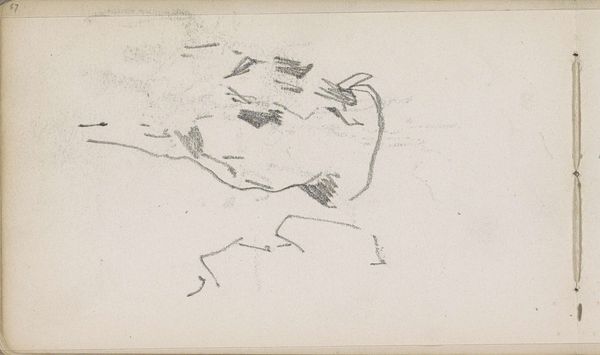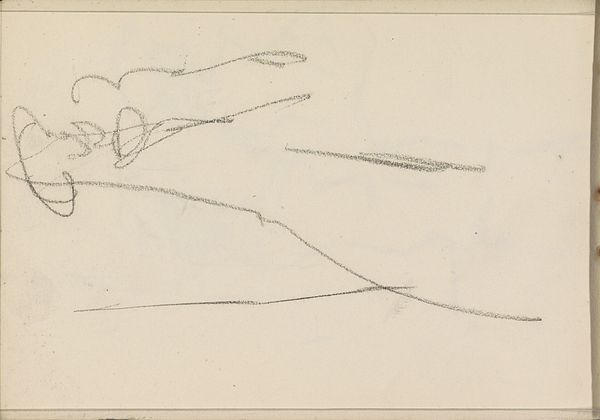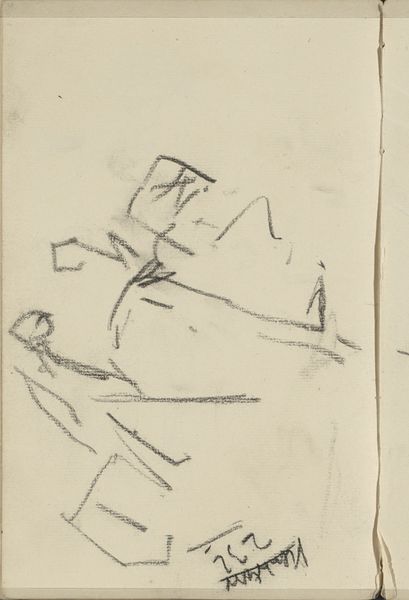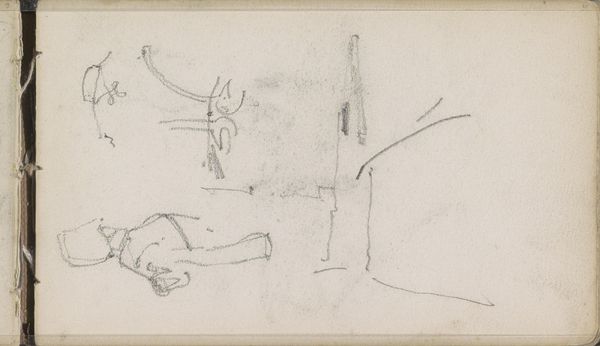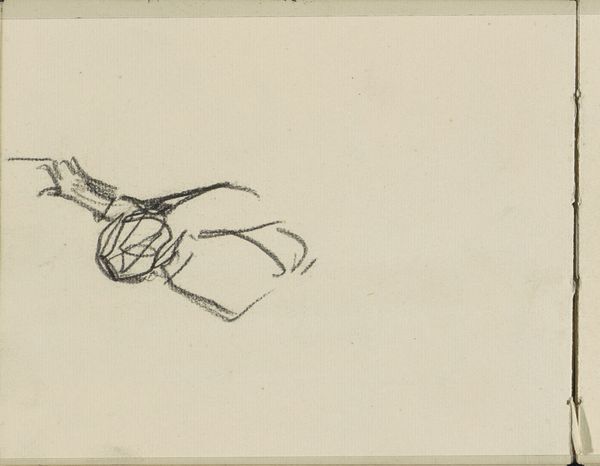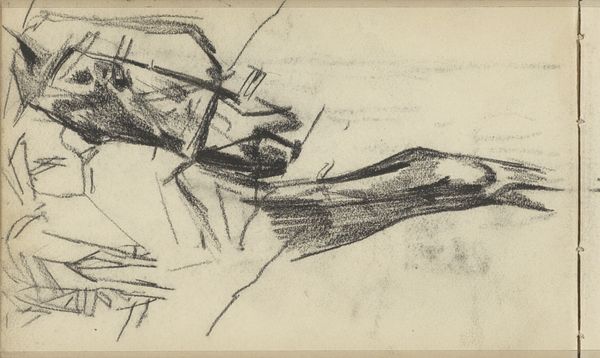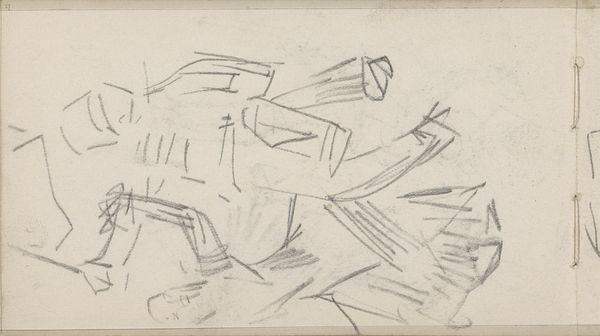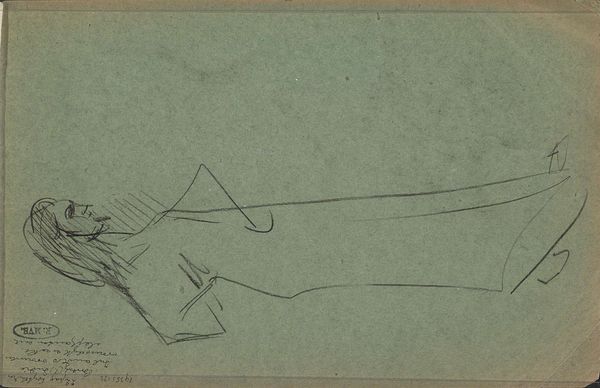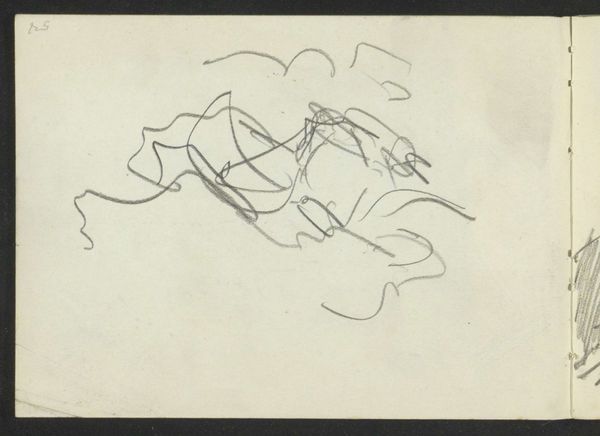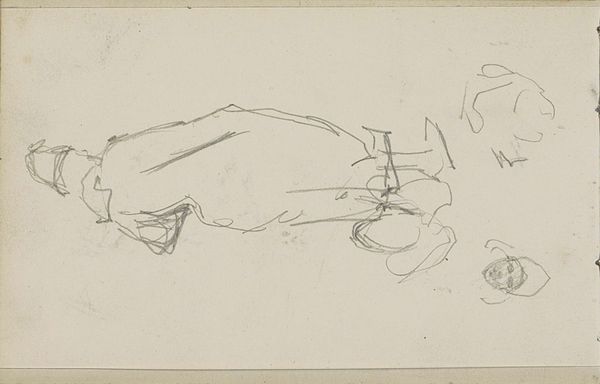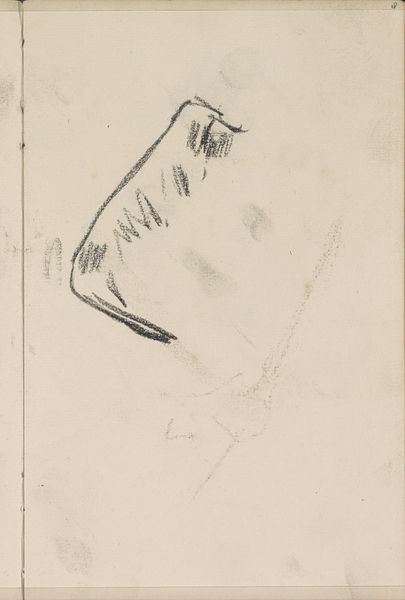
Copyright: Rijks Museum: Open Domain
Editor: Here we have "Standing Woman," a pencil drawing by George Hendrik Breitner, created sometime between 1886 and 1903. It's currently held at the Rijksmuseum. The drawing feels very immediate and almost ephemeral. The lines are so light and sketchy, giving it an unfinished quality. What catches your eye about this piece? Curator: I'm drawn to how Breitner uses the inherent symbolic weight of the figure, even in its incomplete form. There is a raw, almost primal quality to this sketch. Consider the period: late 19th century. What social codes might this woman be implicitly breaking simply by existing, by *standing*, outside of idealized representation? The very act of capturing a fleeting impression, rather than a formal portrait, speaks to a changing cultural landscape. What feelings are evoked for you? Editor: I suppose there’s a sense of vulnerability and honesty. It doesn’t feel staged or posed. Curator: Precisely! And doesn’t the rapid execution, the sketch-like quality, function as a visual metaphor? It symbolizes the transient nature of modern life, a world rapidly changing before our very eyes, escaping the grasp of traditional representation. The choice of pencil, the toned paper – these contribute to an overall impression of fleeting existence. What cultural memory does this visual language stir within you? Editor: I see a precursor to modern anxieties, the feeling of being overwhelmed by the speed of life. It is fascinating how much meaning can be packed into so few lines! Curator: Indeed. Breitner gives us a glimpse into the shifting cultural landscape through the seemingly simple act of sketching a woman. A potent reminder of art's power to hold cultural memory, even in its most understated form. Editor: I never thought about how much a simple sketch could reveal about societal shifts. This has totally changed how I see sketches now.
Comments
No comments
Be the first to comment and join the conversation on the ultimate creative platform.
